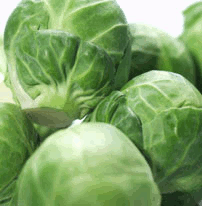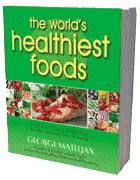What foods are best for celiac disease?
Research studies on celiac disease have shown that many persons with this condition have diets particularly low in dietary fiber. This fact alone may make it tempting to focus on increased fiber as a way to improve the nourishment of someone diagnosed with celiac disease. However, we would definitely not recommend any quick jump to increase the dietary fiber from your food without first consulting with a healthcare practitioner who has special experience and knowledge in this area. The reasons for our concern here are as follows:
There is always a risk of cramping, gas, and bloating from any quick increase in dietary fiber, even for someone who has not been diagnosed with celiac disease. Because the digestive tract of someone with celiac disease is highly likely to be more sensitive than the digestive tract of someone without this condition, there would be even more reason to proceed slowing and deliberately with the amount and type of high-fiber foods added to the meal plan. In addition, persons with celiac disease may have overgrowth of bacteria in their small intestine. This condition is frequently referred to as "small bowel overgrowth." The quick addition of water-soluble fiber in the case of small bowel overgrowth may worsen this condition instead of improving it. This situation is another reason why we recommend the support of a healthcare practitioner in deciding about dietary fiber increases.
Here is some very general information about fiber - not specific for a person with celiac disease - that you may want to share with your healthcare practitioner. The Adequate Intake (AI) range for dietary fiber ranges from 21-38 grams per day depending upon age and sex. Legumes are one of the richest sources of dietary fiber. One cup of garbanzo beans contains 12.5 g of fiber and most other varieties of beans have similar fiber content. Fresh vegetables such as broccoli and collard greens can also provide important amounts of fiber. One cup of both of these vegetables would provide approximately 5 g of fiber.
There are also gluten-free grains such as brown rice, buckwheat, millet and quinoa that can make a significant contribution to fiber intake. A one cup serving of: brown rice contains 3.5 grams, buckwheat contains 4.5 grams; millet contains 3.1 grams; and quinoa contains 2.5 grams.
For more on the best sources of dietary fiber, please see the chart at the bottom of our article on Dietary Fiber located at http://www.whfoods.com/genpage.php?tname=nutrient&dbid=59.
For more information on this topic, see:
- Brown rice
- Buckwheat
- Millet
-
Quinoa
li>Dietary fiber;nutrient,59]
References:
Hill I, Fasano A, Schwartz R, et al,. The Prevalence of Celiac Disease in at-Risk Groups of Children in the United States. J Pediatr. 2000;136(1): 86-90.
Hopman EG, le Cessie S, von Blomberg BM, et al. Nutritional Management of the Gluten-Free Diet in Young People With Celiac Disease in The Netherlands. J Pediatr Gastroenterol Nutr 2006;43(1):102-8.
Kupper C. Dietary Guidelines and Implementation for Celiac Disease. Gastroenterology. 2005;128(4, Suppl 1): S121-7.
Mariani P, Viti MG, Montuori M, et al. The Gluten-Free Diet: a Nutritional Risk Factor for Adolescents With Celiac Disease? J Pediatr Gastroenterol Nutr. 1998;27(5): 519-23.






